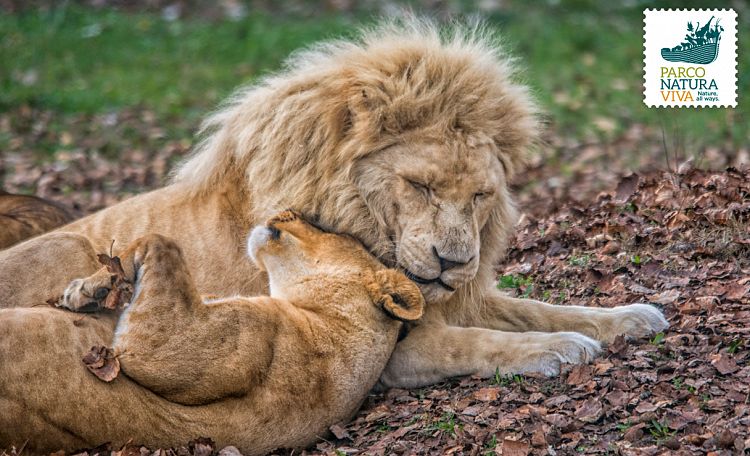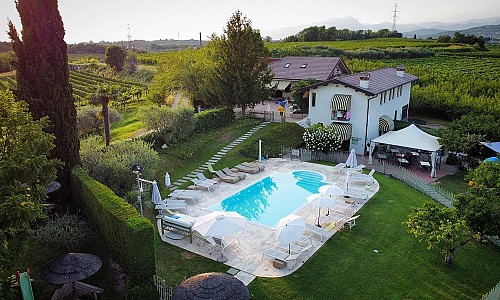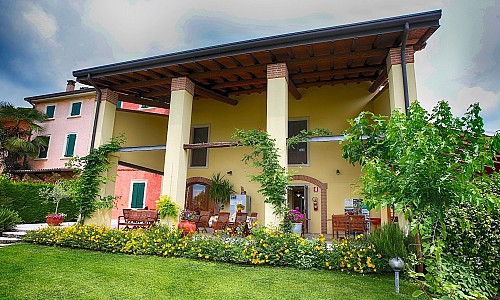Parco Natura Viva ☀️ Garda Lake
- Category What to do Lake Garda and Verona
Parco Natura Viva: fun for young and old, in contact with nature and the most varied animals.
Number of views: 7586Agriturismo - Where to stay overnight
The Parco Natura Viva is today a modern Zoological Park, an important protection center for endangered species, which has been able to evolve over time to take an active role in the conservation of biodiversity. The park was born from the brilliant idea of the architect Alberto Avesani, the founder, who in the 1960s transformed part of his farm, existing since 1933, into a wildlife area, collecting animals from the local fauna raise them and possibly show them to the public. From this embryonic idea was born the opportunity to temporarily welcome the animals of a circus and hence the thought of creating a park, open to the public, to host both exotic and native animals.
Designed since 1965, a first sector of about 10 hectares was inaugurated on June 21, 1969, the current Fauna trail. In 1973, a sector dedicated to the species of African mammals and birds called Safari was added, to be visited on board your own vehicle. In 1978 the structure was further expanded with new routes: the Aquaterrarium, the Tropical Greenhouse and the Dinosaurs area, where visitors the first time in Italy, they were able to admire life-size models of the reptiles of the past. Since 1985 an important general redevelopment project has been launched which has involved and still involves various fundamental aspects: zoological, architectural and managerial.
1969 Parco Zoo del Garda, Aquaterrarium
1973 Safari Park
1977 Dinosaur Park
1978 Tropical Greenhouse
1984 Cesare Avesani Zaborra, son of the architect Avesani, graduated in biology in 1984 and entered the management of the Parco Zoo del Garda, whose name was gradually changed to “Parco Natura Viva "between 1984 and 1985.
In the 90s the Parco Natura Viva was still divided 50% between the safari area and the wildlife area. However, this did not prevent the gradual evolution of wildlife areas and the simultaneous arrival of new species, the result of new collaborations with the European network EAZA (European Association of Zoos and Aquaria) and projects known as EEP (European Endangered Project). The role of zoological parks has evolved over time: from a simple display of exotic animals to a key player in their conservation. The usefulness and necessity of a modern zoological garden were officially defined by the Rio Conference of 1992, which strongly stated the value of the ex situ conservation strategy integrated with the in situ one in the protection and protection of Biodiversity.
2002 The Ark becomes the symbol of the Park - For several years Cesare Avesani Zaborra has been talking about the Park as a special "Noah's Ark", whose role was to protect endangered species from extinction. The ark became the metaphor of the Mission of modern zoos, and so in 2002 it became the Park logo in its own right.
2004 First reintroduction of European bison - In 2004, the Parco Natura Viva participated in the European Bison Reintroduction Project of the Large Herbivore Foundation. In June 2004, two females born in the Park along with three other bison from other European zoos were reintroduced into Poloniny National Park in Slovakia in close proximity to a wild population. In the following years, the project continued with other collaborations and releases.
2009 The Dinosaur Park becomes Extinction Park - “The new awareness of the continuous loss of biodiversity on our planet has led to seeing the concept of extinction in a new light. Not only as a very ancient phenomenon, but as a fact of the present. Hence the idea of transforming the old Dinosaur Park into "Extinction Park", a structure dedicated to the extinctions of the past as stages in the long history of evolution, and to the extinctions of the "present" to raise everyone's awareness towards the importance of safeguarding biodiversity.
2010: reduction of the Safari and extension of the pedestrian section to 70% of the Park surface, thus reducing private car use. Thus the Paths of Africa were born. For the first time, visitors were able to walk next to hippos and rhinos in complete safety, as in a pedestrian safari. The Trails of Africa won the Parksmania Award 2010 as the best Italian attraction of the year. Since 2010, the ticket to visit the Park is unique, no longer divided between Safari and Wildlife. 2010 - The Park hosts the EAZA Annual Conference - The inclusion of the Parco Natura Viva in the European panorama culminated in welcoming the entire network of colleagues from all corners of Europe - at the time about 350 institutions and 630 delegates - who decided to meet in Bussolengo for the 2010 EAZA annual conference.
2014 New logo (current) and new graphics of the Park. The work behind the scenes continues to carry out the MISSION of the Parco Natura Viva.
2017/2018 - The animals of the Park enter Joel Sartore's National Geographic Photo Ark project. From the European bison to Hermann's tortoises, the first specimens of Italy became part of the "National Geographic Photo Ark", the real "photographic ark" of global biodiversity that today counts more of 6,000 animal species. From the best known to the least loved, all are immortalized with the aim of stirring the conscience of the observer and dragging the viewer to become an active part of the world of conservation of endangered animal species.





































